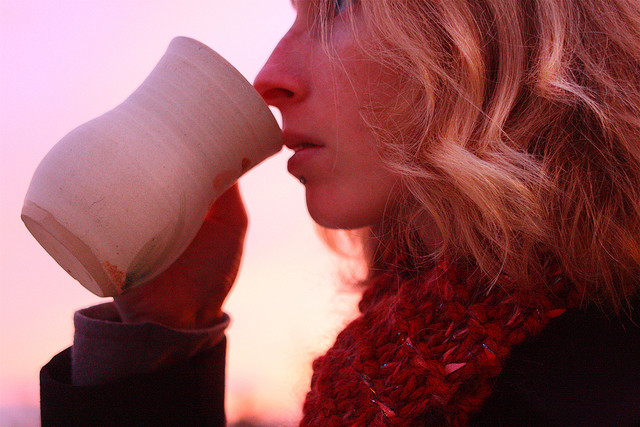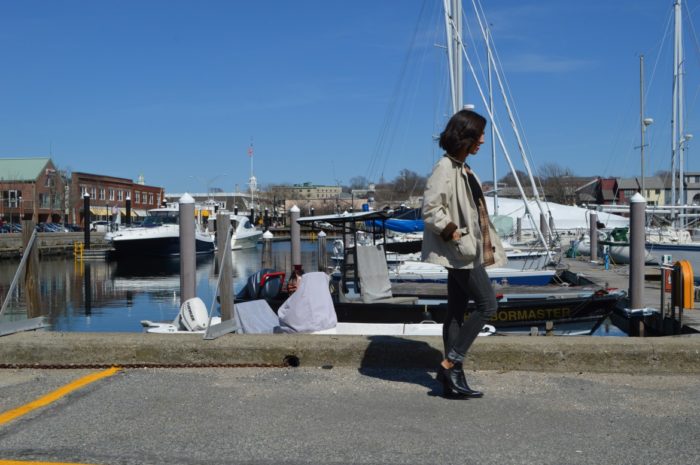
- A version of this article originally appeared on A Peaceful Living.
I’ve really been rethinking my role as a consumer and, over the last year or so, have realized that having a lot of shoes, clothes, and things is, for me, a bit suffocating. As someone who always liked to buy new clothes, or was always coveting something, it was a really defining moment for me when I actually stepped back, looked at my overcrowded closet, and realized that despite having plenty to wear, I didn’t really have much at all. Having a closet packed full of clothes was ultimately daunting and oppressive; a number of items were rarely worn and just listlessly hanging there taking up space, while many other items didn’t really suit my style, were ill-fitting, or didn’t make any sense paired with the items I actually did wear. This realization was the first step on a long road I’ve since been on to develop a more minimal wardrobe that I really enjoy and is of quality and as ethical as possible.
Along the road to developing a leaner, more versatile wardrobe, I also began considering the impact my purchases as a consumer have in terms of what my dollar is supporting.
Questions like: who made my clothes, where were they made, and were they made in a way that would bring excessive harm to the environment, were questions that, upon learning the answers, I had only wished I had asked sooner.
This is why
The 2013 collapse of the Rana Plaza building in Bangladesh, that killed 1,133 people and injured 2,500 others, was a tragedy of massive proportions that brought the dark side of the fashion industry into the public eye. The movie The True Cost further shed light on the real impact that fashion has on people and the planet.
Ever since learning about Rana Plaza and delving deeper into the ethics of how clothes are made, the impacts it has on people and the environment, and learning more through my peers in the Ethical Writers Coalition, there has been a voice inside my head reminding me of the impact my dollars have in terms of where I choose to spend them.
Spending your money is like voting; you’re essentially voting for a product when you buy it and that has consequences beyond your wardrobe.
For me, learning about Rana Plaza opened my eyes to the truth of it all and forced me really question more seriously where the clothes I was buying came from and to stop making excuses for continuing to buy clothes from brands who’s supply chain wasn’t transparent.
Can I really justify purchasing a $15 tank top from a fast fashion chain knowing that it could have been made by an underpaid person working in a potentially unsafe factory? No.
Believe me, I’ve slipped up, I’m not perfect. But I’ve become more conscious of and strive to be more intentional in what I do buy.
If you think that Rana Plaza was an isolated incident and that most garment factories are safe, fair, and well regulated then you’re in for quite a shock.
Consider this:
As recently as January of this year, Syrian refugee children were found working in factories located Turkey supplying major brands like H & M and Next.
Or this:
The leather tanning industry is one of the most toxic industries in the world. Some tanneries are responsible for effectively poisoning entire communities, laying waste to their land and water supplies with harmful chemicals.
Human Rights Watch issued a report in 2012 that detailed the conditions of the tanneries located in Hazaribagh, a neighborhood of Dhaka in Bangladesh, where there are around 150 tanneries and 15,000 workers employed during peak months. Children have also been found to be working in the tanneries.
Asthma, skin diseases, and workplace accidents are horrifyingly common in these factories. Workers are exposed to hexavalent chromium, a known carcinogen, and one of the Top Six Threats of 2015.
People living in the communities surrounding factories report, among other things, diarrhea and respiratory problems.
The report says:
“While other factors may play some part in these illnesses, the extent of documented tannery pollution, the results of interviews with residents, and the findings of studies showing a higher prevalence of these illnesses in Hazaribagh compared to neighborhoods with similar socio-economic characteristics, strongly suggest a causal relationship between tannery pollution and poor community health.”
The environmental impact has been detrimental to the area and has rendered , the Baringanga River, the city’s main waterway, completely polluted.
Leather processed in Bangladesh is imported all over the world, to places like Italy, Japan, and the United States, where it is turned into “luxury” goods. Does it seem so luxurious now?
Hazaribagh is listed as one of the world’s 10 Toxic Threats
Also to consider:
The fashion industry’s environmental footprint is also pretty massive.
Some statistics:
It takes about 1,800 gallons of water to grow enough cotton to make ONE pair of jeans.
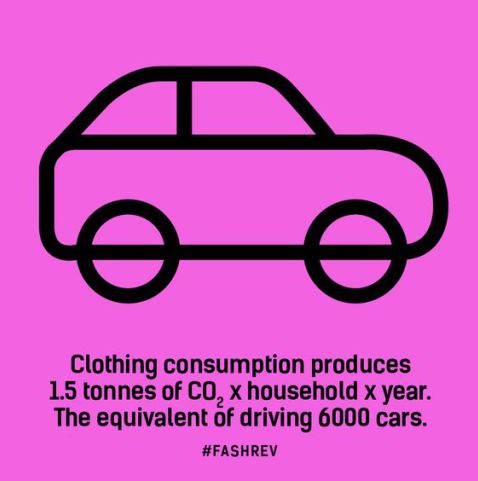
The average American throws away 68 lbs of clothing each year.
Can you make a difference?
I think if we all do our part – we can. This is why I’m joining Fashion Revolution, which works to “bring people from all over the world together to use the power of fashion to change the story for the people who make the world’s clothes and accessories.”
It is a revolutionary week where regular people like you or me can try to disrupt the status quo, motivate brands to change, and to evaluate our own personal choices when we shop.
So, the next time you’ve got a hankering to go on a big shopping spree, or fret over the ever familiar “I have nothing to wear” moment, consider first making the most of what you have.
Since I started the process of making a leaner wardrobe I’ve been building a collection of essential, versatile, ethically made pieces that serve as the year-round foundation of my wardrobe.
Think: basics that can be paired with anything, tops or bottoms that can be both dressed up or dressed down, or items that travel well.
When you have that foundation you can really get a lot of bang for your buck. For example, one plain black shirt can easily turn it into three pretty distinct and different looks.
Shirt made of recycled fabric: Reformation
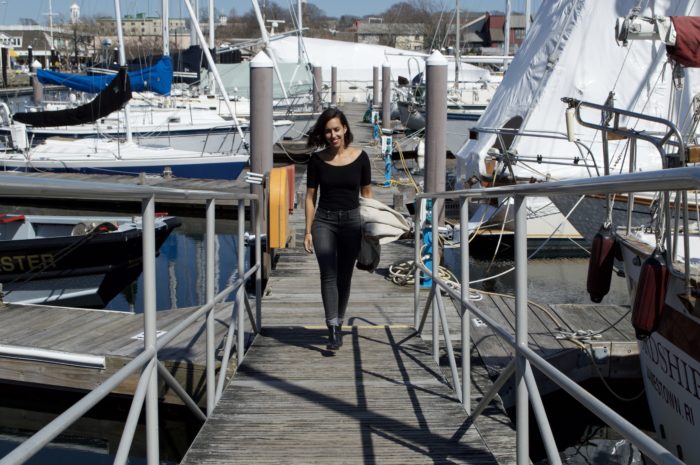
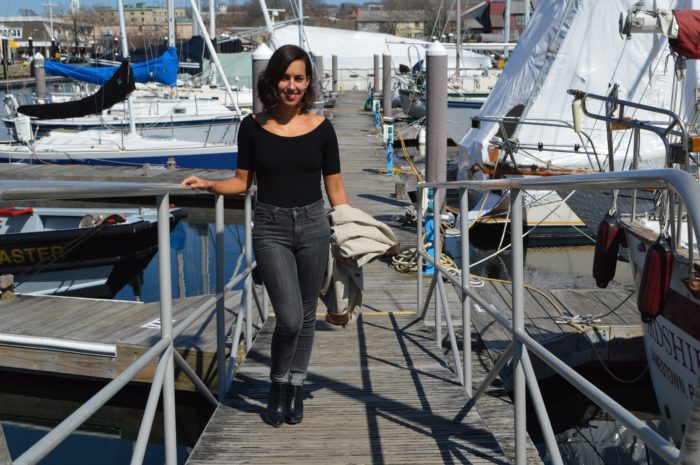
Obviously, this is a pretty basic look and is typically my go to: jeans and t, paired with boots. It works just out-and-about on a casual day, but could easily be made into a date-night appropriate get up by adding a snazzy jacket or accessories.
This same shirt looks just as good with a skirt I got at a local secondhand shop paired with vegan leather sandals from Moo Shoes for a trip to the farmers market or a cruise outside on a nice afternoon.
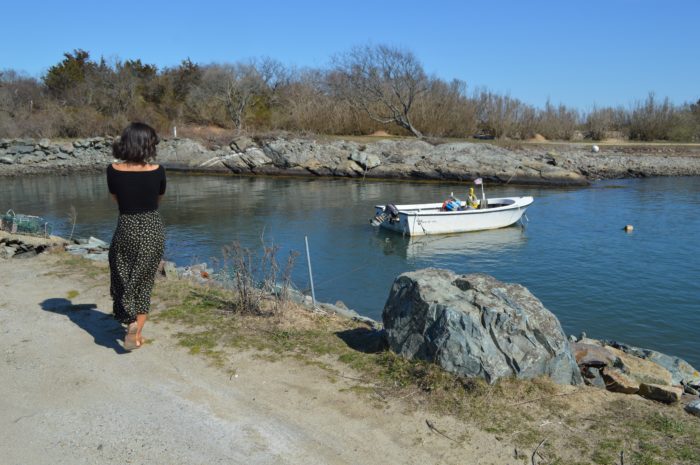

Finally, the same shirt works really great for a more special occasion paired with heels- these are the Priscilla heels from Nicora Johns – (or even the same boots from the first photo – versatility!) and accessories
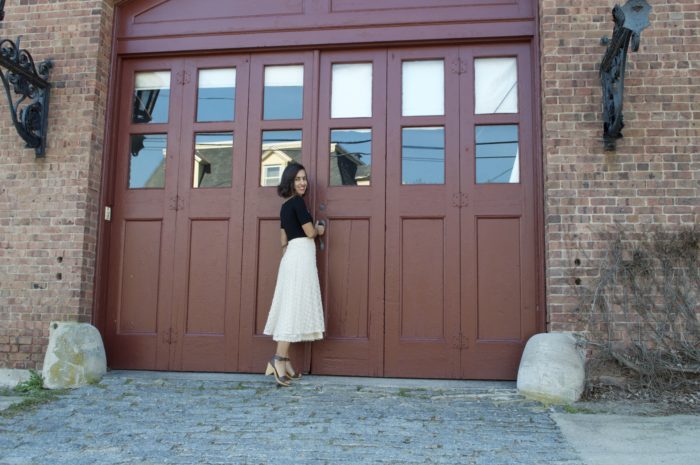
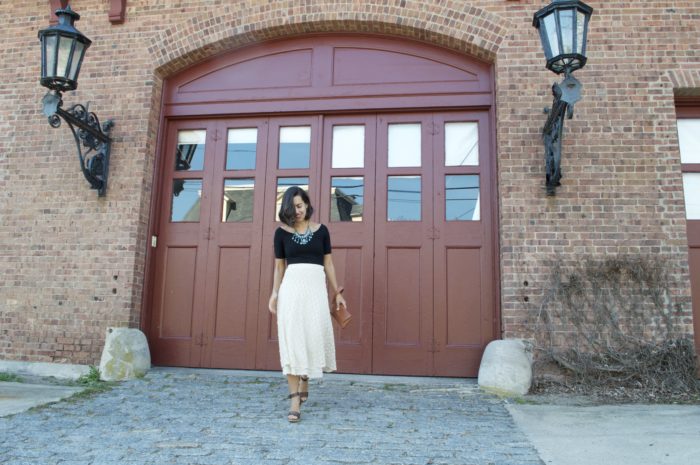
Obviously, a black shirt is the easiest piece of clothing to imagine working with various outfits, but my point is – make your wardrobe work for you. Mix-and-match, wear something more than once before washing it. You’ll spend less money, use fewer resources, and spend less time thinking about what you’re going to wear.
But, if you find that you’re really in the mood for something new, or that you really are in need of something that you don’t currently have, consider shopping vintage or second-hand before buying new.
If you’ve never shopped second-hand before it can feel daunting. But, the good news is there truly is something for everyone: uber high-end ultra-curated vintage shops, run-of-the-mill consignment shops, and massive super cheap Savers style warehouses. Think about your style, what you’re looking for, and how you like your shopping experience to be.
I was recently in the market for a jacket light enough to be worn in late spring or chilly summer evenings, but heavy and roomy enough that I could layer over bulkier sweaters when the temperature dipped in late fall. After visiting only two vintage shops, I scored an L.L. Bean Barn Jacket in mint condition for way cheaper than it currently retails now.
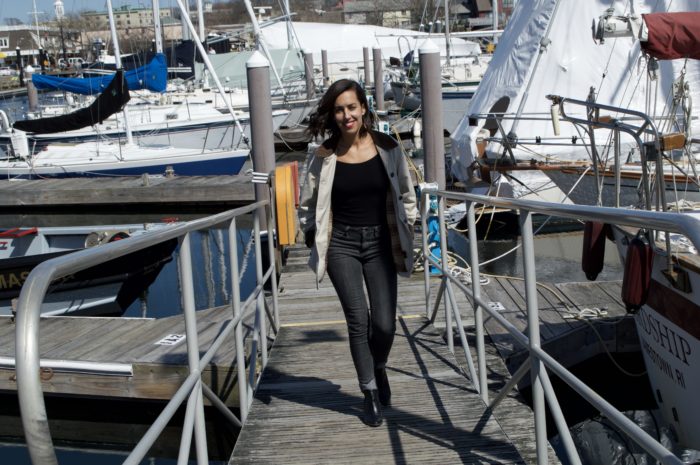
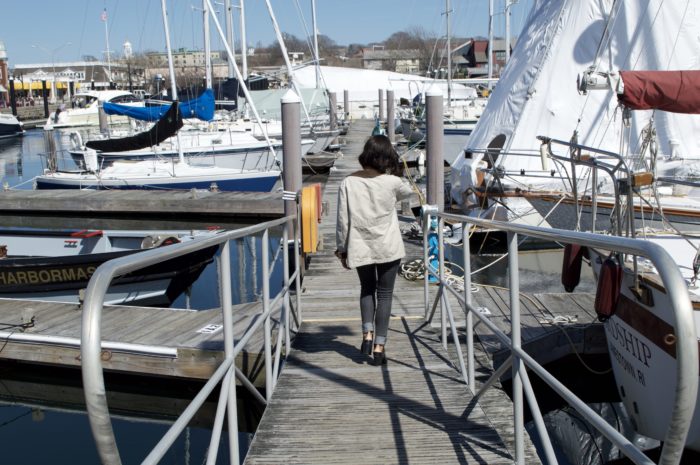
By working with what you have and buying vintage or second hand if you can when you want or need something will allow you to save up your money to invest in a really special piece that is of high-quality, made to last, and is – best of all – going to a brand or designer that is paying their workers fair wages in a safe and regulated environment.
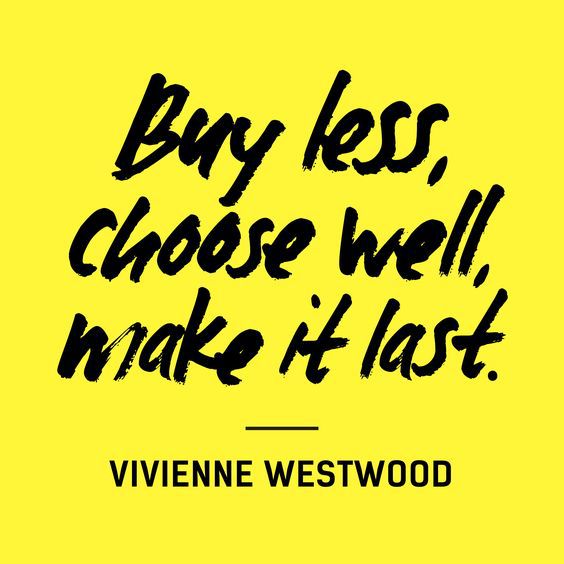
What approaches to ethical fashion have worked for you?
Also by Stephanie: What You Should Know about Coconut Oil and Animal Exploitation
Related: Interview: Cruelty-Free Fashion Label Delikate Rayne
What’s Really In “Vegan Leather?”
How to Select Conflict-Free Engagement Rings
Get more like this—Subscribe to our daily inspirational newsletter for exclusive content!
__
Photos: My Kind Closet (Stephanie Villano), Fashion Revolution (quotes)

